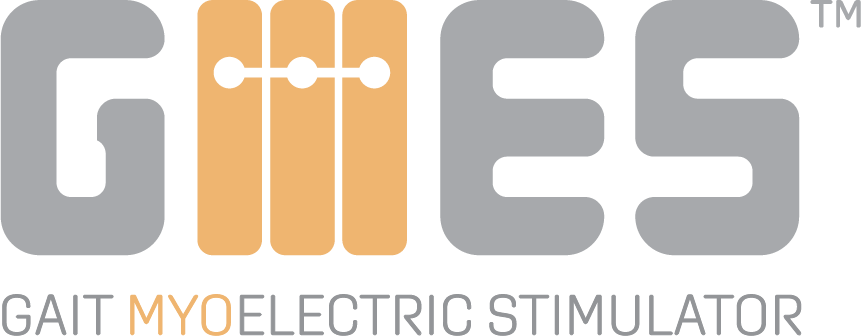
1 Centerpointe Drive, Suite 100
La Palma, CA 90623
La Palma, CA 90623
Current functional electric stimulation (FES) devices focus on stimulating only one muscle group to overcome foot drop, the inability to raise the front of the foot. Some devices that simply lift the foot do not smooth the halted gait, so a significant abnormal gait pattern may persist. Clinicians who treat patients with neuromuscular deficits of the lower extremities, ultimately want to improve and restore a more natural gait for their patients.
Two common options to control the ankle during walking include 1) Ankle-Foot Orthoses (AFO) which braces the foot to prevent it from dropping, and 2) a single-channel FES which improves foot drop but ignores the contribution that the plantar flexors provide for a more natural gait. In addition, several of the FES devices on the market are cost prohibitive for many people.
GMES, an innovative FES system, incorporates proprietary dual-stimulator technology to help improve the walking ability in patients with neuromuscular conditions, such as stroke, cerebral palsy, multiple sclerosis, and peripheral vascular disease. Its patented FES electronics and software infrastructure addresses both the plantar flexors and dorsiflexors, and activates the muscles controlling the ankle. The GMES therapy uses the principles of neuroplasticity to modulate neural pathways that enable the voluntary movement of the muscles needed to activate the paretic and weak muscles. GMES technology can also be easily adapted to activate the muscles controlling the knee, as well as other muscle groups.
GMES is a patented non-significant risk, stimulation system designed to meet Class II, 510k FES medical device requirements. GMES:
David G. Embrey, PhD, Sandra L. Holtz, PT, Gad Alon, PhD, Brenna A. Brandsma, DPT, Sarah Westcott McCoy, PhD
A FES system that stimulates dorsiflexors and plantar flexors, similar to the timing of typical adult gait, combined with daily walking, can improve the walking ability of adults with hemiplegia.
Gad Alon, David G. Embrey, Brenna A. Brandsma, Jeff Stonestreet
Shortening the phase duration resulted in a more comfortable and more efficient stimulation that may lead to designing a lower profile, lighter weight, and more cosmetic FES.
David G. Embrey, PhD, Gad Alon, PhD, Brenna A. Brandsma, DPT, Felix Vladimir, MD FACS
Walking with FES markedly reduced ischemic pain and enhanced QOL compared to just walking.
FES while walking, may offer an effective treatment option for the elderly with PAD and Intermittent Claudication.
Potential to help patients relearn how to walk independently, without long-term dependence on the device.
Clinical benefits of GMES lasted 8-12 weeks after the conclusion of therapy
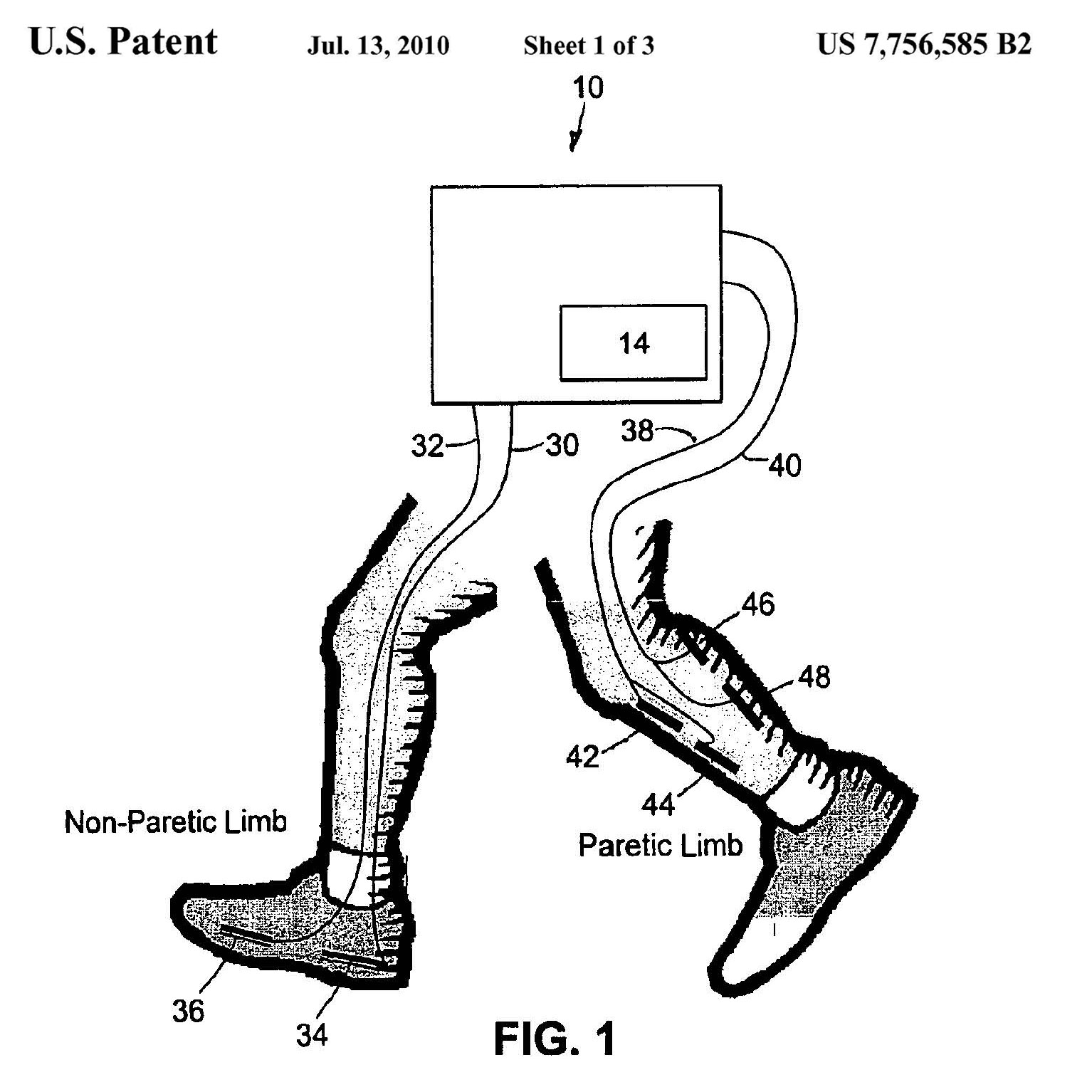

David Embrey, Jeffrey Stonestreet, Gadi Alon
Functional electrical stimulation (FES) method and system to improve walking and other locomotion functions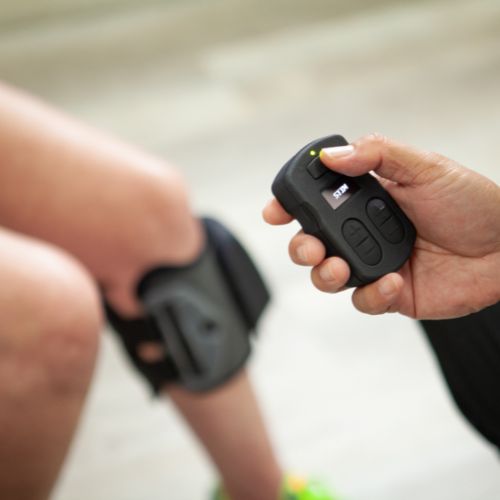
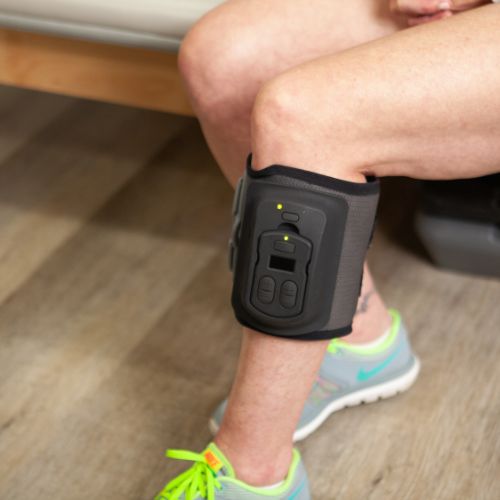
Comfortable, soft-sleeved cuff with hook & loop fastening (electrodes housed in the cuff, so no adhesives or exposed wires)
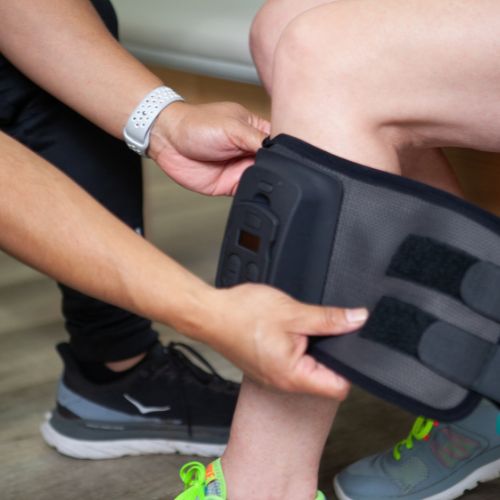

Convenient pocket for remote wireless control
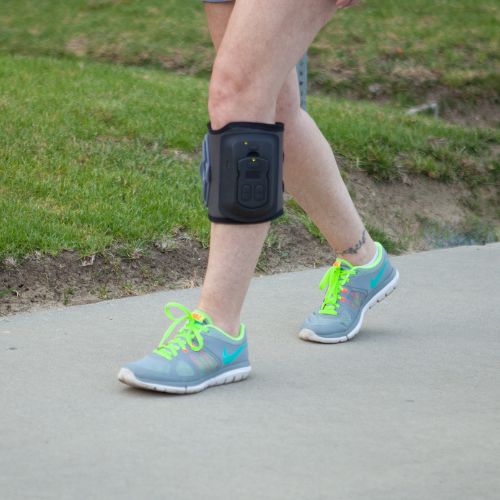
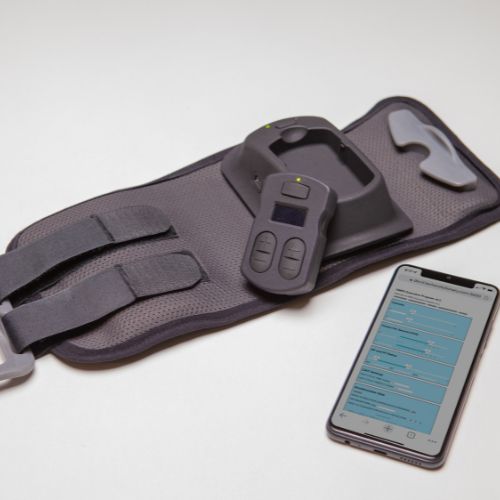
Physical therapist and healthcare providers (i.e. neurologists )
working with
| GMES | FES Devices Used for Drop Foot |
|---|---|
| Stimulates synergistic muscles, improving joint movement and stability | Stimulates only the dorsiflexor muscles |
| Mimics natural walking function with reciprocal dual stimulation enabled by motion sensors | Aims to prevent tripping, lifting drop foot only, not restore a natural gait |
| Shows potential to help patients relearn how to walk independently | Requires long term use, resulting in dependence on the device indefinitely |
| Intuitive and easy-to-use wireless system | May be difficult for patients to use leading to frustration or ceasing therapy |
| An affordable device to reach those who need it the most | Single channel FES wireless systems are priced between $4,500-$6,000 out-of-pocket cost (without reimbursement) - unaffordable for many patients |



Innovation Lab is the future-forward innovation engine of The Innovation Institute, a healthcare incubator and network focused on transforming healthcare delivery to change people’s lives and improve the long-term health of our communities.
At its core, Innovation Lab is a conduit for next-generation ideas. And a place to champion disruption. We bring together the best and brightest — thinkers, dreamers, doers, and fighters — to explore obstacles and opportunity alike. Together we create transformative change to improve care and help people live better, healthier, longer lives. The future is here.
